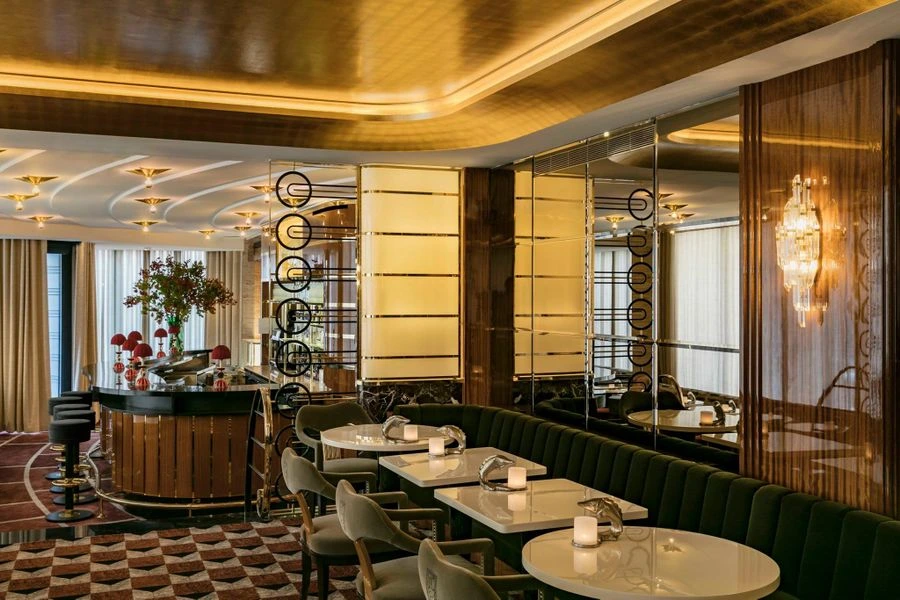Michelin-Starred Restaurants in Paris: How Interiors Redefine Fine Dining
Paris is home to some of the world’s most celebrated dining experiences. Yet, the brilliance of Michelin-starred restaurants in Paris extends beyond the plate. In these rarefied spaces, architecture and interior design play a central role in shaping the narrative of fine dining. From the soft glow of handcrafted lighting to the timeless elegance of bespoke furniture, every detail is curated to heighten emotion and memory.
The Power of Atmosphere in Culinary Storytelling
In the modern culinary world, the dining experience is no longer confined to taste. Michelin-starred establishments in Paris understand that atmosphere is as essential as flavor. Interiors become part of the storytelling: a minimalist room sets the stage for avant-garde creations, while gilded ceilings and marble details echo heritage recipes steeped in tradition.
Design as a Partner to Gastronomy
At the pinnacle of French dining, architecture and cuisine form a dialogue. The choice of dining chairs, the spacing of tables, the acoustics, and even the texture of fabrics are designed with purpose:
Comfort-driven luxury: Deep, upholstered chairs allow guests to relax and savor multi-course meals without distraction.
Spatial choreography: Table placement ensures intimacy, while also celebrating the art of presentation.
Materiality: Rich woods, marble, and handcrafted metals mirror the refinement of haute cuisine.

Historical Grandeur Meets Contemporary Elegance
Many Michelin-starred restaurants in Paris occupy spaces with layered histories. The interiors often juxtapose centuries-old architectural details with contemporary design. A Beaux-Arts dining room may feature sculptural lighting by modern artisans, while velvet banquettes recall the glamour of early 20th-century salons. This balance between past and present reflects Paris’s duality: rooted in tradition yet perpetually reinventing itself.
The Role of Lighting in Culinary Theatre
Lighting is one of the most carefully considered aspects of Parisian Michelin-starred interiors. Designers use illumination as a tool for sensory enhancement:
Soft pools of light create intimacy around each table.
Architectural highlights emphasize vaulted ceilings, gilded mouldings, or sculptural walls.
Dynamic adaptability ensures that a lunch service feels airy and fresh, while dinner evokes drama and romance.
Furniture as Sculptural Art
Parisian chefs collaborate with artisans and designers to curate bespoke furniture pieces that become extensions of their culinary philosophy. A handcrafted dining table is not just a surface, it is a stage for plating. Chairs upholstered in neutral tones allow the vibrancy of dishes to command attention. In many Michelin-starred dining rooms, each furnishing is an art piece in its own right, blending seamlessly with architectural lines.
Minimalism for the Modern Palate
While some Parisian dining rooms revel in opulence, others embrace restraint. Minimalist interiors highlight the purity of the chef’s creations. Neutral color palettes, stone surfaces, and organic shapes allow diners to focus wholly on the dish, transforming the meal into an immersive sensory meditation. This aesthetic resonates with a new generation of international travelers who seek authenticity over extravagance.
Design as an Emotional Catalyst
Every curve of a chair, every note of fragrance from fresh florals, and every echo softened by acoustic panels contributes to an emotional crescendo. The design of Michelin-starred restaurants in Paris is not accidental, it is psychological architecture that deepens memory. Diners often recall not just what they ate, but how they felt: protected, inspired, astonished, or transported.
The Global Influence of Parisian Dining Interiors
The design philosophy of Michelin-starred restaurants in Paris has global resonance. From luxury residences in New York to boutique hotels in Dubai, architects and interior designers draw inspiration from Parisian dining rooms. Key takeaways include:
Integration of art and dining: Curated artworks enhance storytelling.
Organic flow of space: Movement through the room is seamless, echoing the cadence of the meal.
Sensory balance: Harmony across touch, sight, sound, and taste creates a holistic experience.
Why This Matters for Architects and Designers
For international professionals, the interiors of Michelin-starred restaurants in Paris serve as case studies in experiential design. These spaces demonstrate how subtle choices in form, color, and materiality can elevate not just an environment but also human connection within it. For architects, designers, and real estate developers, the lesson is clear: luxury today is defined by experiences, not objects.
Dining as Design
Michelin-starred restaurants in Paris reveal that fine dining is no longer confined to the culinary domain—it is an orchestrated performance where interiors play a starring role. By marrying heritage with innovation, opulence with restraint, and function with beauty, these spaces elevate dining into an art form. For those shaping the future of design, the Parisian model demonstrates how atmosphere, detail, and storytelling can transform any space into an unforgettable journey.
Why Nolita Harbour?
At Nolita Harbour, we understand the importance of design in creating memorable spaces. Explore our exclusive furniture collection to find pieces that bring the sophistication and elegance of world-class interior designs into your home.
Our Bespoke section includes exceptional interior design projects with Custom furniture that transform each room into a unique work of art.